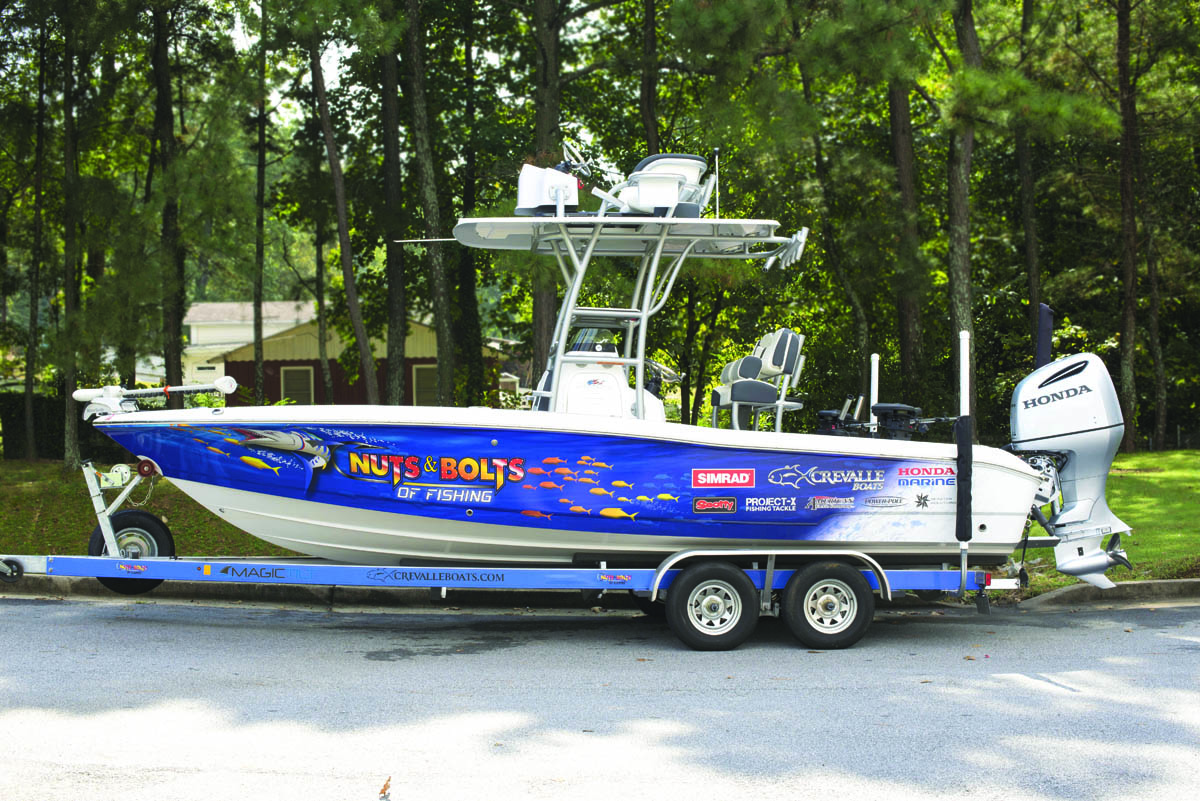By Capt. Cefus McRae, Nuts & Bolts of Fishing Series
If you own a boat, there’s a high likelihood you also own a trailer. Based on my observations over the years, there’s two categories of trailer owners; those who regularly launch and load their boats, and everyone else.
If you’re a frequent trailer user, then you probably already realize the need to perform periodic maintenance and pre-highway checks. If you fall into the “everyone else” category, this article is for you. From what I see at the boat ramps, I’d say there are plenty of people who fit in the “everyone else” pile. It’s nothing to be ashamed of though, as even the most experienced boat owner was an “’everyone else” at some point.
When it comes to boat trailers, Murphy’s Law definitely comes into play, but with some simple preventative maintenance, many problems can be avoided.
Let’s start with the most obvious ones like tire pressure. Trailer tires have their recommended pressure ratings molded into the side walls. Pump them up to that, and check pressure regularly. Enough said.
Wheel bearings. Check your Bearing Buddies for adequate bearing grease. Don’t over grease though, because you could potentially blow out the back seal, and not know it until you have a wheel come flying off the axle at 60 mph.
Trailer brakes. Most trailers these days will come with some form of braking system, either surge-style brakes, or electric over hydraulic. Some will be disc and some will use drum brakes. Regardless of the type or style, check them for wear, and also check your brake fluid reservoir regularly. There’s a lot of weight and inertia behind your tow vehicle, and those brakes are a necessary part of the stopping-on-a-dime equation.
While we’re on brakes, also check your tow vehicle’s brakes too. With surge brakes, the vehicle needs to slow down for the surge cylinder to engage its stopping force. If your boat can ‘push’ your tow vehicle, then maybe you need to consider electric brakes or a different tow vehicle.
Another obvious item is your trailer lighting system. Before you head on the highway, have a buddy depress the brake pedal and flip the turn signals while you check to insure they are functional.
The winch and winch strap are key components of your trailer. Wind out 10 feet or more of your winch strap and make sure it’s not frayed. Check the connection between the bow eye hook and the strap itself. That can become weakened by simply sitting in the sun for years on end. You should also have a safety chain that is connected to the trailer and hooks to the bow eye, just in case the strap were to ever break. Lubricate the moving parts of the winch occasionally too.
Finally, once you’ve launched your boat, take a couple minutes to check the bunks. That old carpet might need to be replaced. You might have staples, screw heads or even nails that have become exposed, and you’re gouging the bottom of your hull every time you load the boat. Not good.
If your trailer sits behind the barn for a year or two between uses, take a little time to give it a good once-over and discover problems you can fix before you start heading down the highway. I’ve had my share of blown tires on the expressway, locked up brake systems, and winch straps that popped when I crossed over a railroad track. The boat bounced a little as we crossed the bumpy tracks and the strap literally exploded.
Perform the simple checks and periodic maintenance tasks, and your trailer will get your boat to the water and back.
